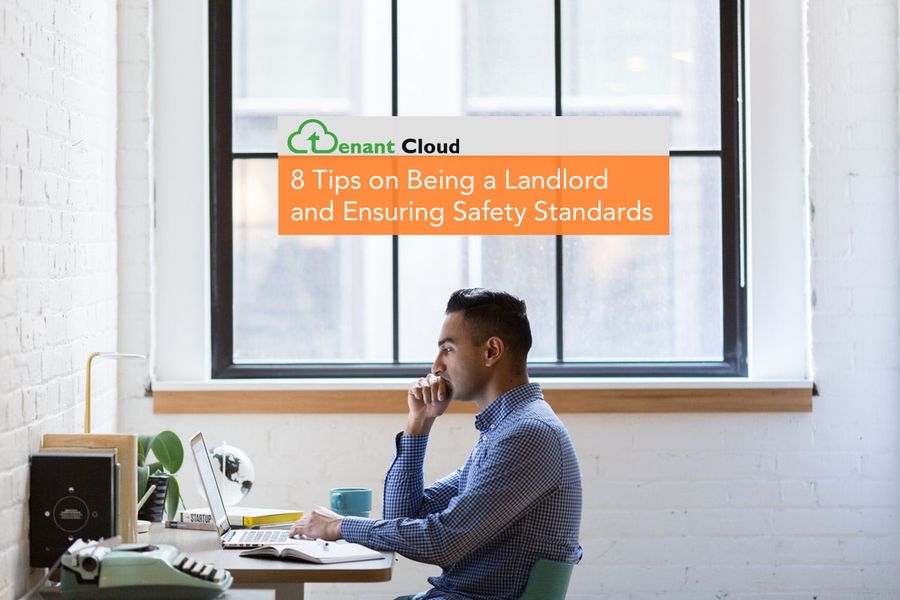As a landlord, you ensure your rental is safe and habitable. Once you collect rent you want to keep it. In many states tenants can be awarded free rent for claims against habitability. But what exactly does making a property “safe and habitable” entail?
Read our eight-step guide to ensure you’re doing everything to make sure you are covered from any tenant claims.

1. Implied Warranty of Habitability
The standard for livability, in most states, is set at the implied warranty of habitability. In general this includes access to potable hot and cold water, heat, electricity, functional bathrooms, building code compliance, and a sanitary premises (free from infestation). A move-in inspection is a good way to get the tenant’s confirmation that the rental meets this standard. Once the tenant has moved in, using a formal maintenance request system such as TenantCloud’s will help to ensure no claims linger unaddressed.
2. Asbestos and Lead
Federal law governs both asbestos and lead in dwellings. Landlords of buildings built before 1978 are required to inform tenants of lead paint on the premises, while for buildings built before 1981, they must inform, warn, and train tenants who will be in the presence of asbestos in their buildings. If your property is built before 1981 make sure you include a "lead based paint disclosure" This can be done in TenantCloud easily by creating a "notice" template and using the EPA form you can find if you click here.
3. Detectors
Smoke detectors are a relatively simple safety protection to put into place. Not only can they save lives and prevent property damage, in many states they are required. Carbon monoxide detectors are also mandatory in a number of states, so consider installing them at the same time. Remember to check the alarms yearly. You can set up reminders to do so within TC Calendar.
4. Criminal Activity
To ensure your property is safe and free from criminal activity, exterior doors should have both a pin lock and a deadbolt to secure the dwelling. This is likely governed by local laws. Consider rekeying the locks when tenants change. TenantCloud includes a great tool for tracking key replacement of your rentals, so you can manage a key rotation and save on lock replacement. In addition, installing outdoor lights could further discourage crime.
5. Home Inspections
Regular inspections are a proactive way to ensure your property is up to safety standards. Most landlords inspect from one to four times a year, depending on terms specified in the lease. Check that electricity, plumbing, and appliances are operating as they should; test smoke and carbon monoxide detectors; examine heat sources to ensure they’re functioning, as well as locks and latches, stairs, and railings; and check for pest infestations.
6. Communication, Communication, Communication
Possible safety hazards are an area where good communication with your tenants can be key. Mention any known problems that you haven’t been able to repair yet in the lease. Doing so won’t release you from responsibility, but it will at least accurately represent your rental. Keeping the lines of communication open can go a long way toward preventing a bad outcome.
7. Renters Negligence Insurance (Renters Insurance)
Another common sense option to protect your rental is to require tenants to purchase renters insurance. Renters insurance provides landlords with additional coverage in the event the tenant was the cause of damage to your rental. If they leave the faucet running and it leads to flooding, or a BBQ on the back porch leads to fire, then you as the landlord can be compensated for the damages, in addition to your landlord policy. Assurant, in partnership with TenantCloud, offers a single low-cost policy that covers both the landlord and the tenant.
Related: Do I Need Renters Insurance Or How It Can Protect Landlords
8. Do Your Research
Above all, familiarize yourself with national, state, and local laws. Your legal responsibility as a landlord may vary based on your location.
Share with us your experience in comments below. We would love to know what you think!
Create House Rental Lease Agreement Easy: Property Management Software For Landlords
4 Things To Prepare For A New Tenant Into Your Rental Property: Landlord Checklist







